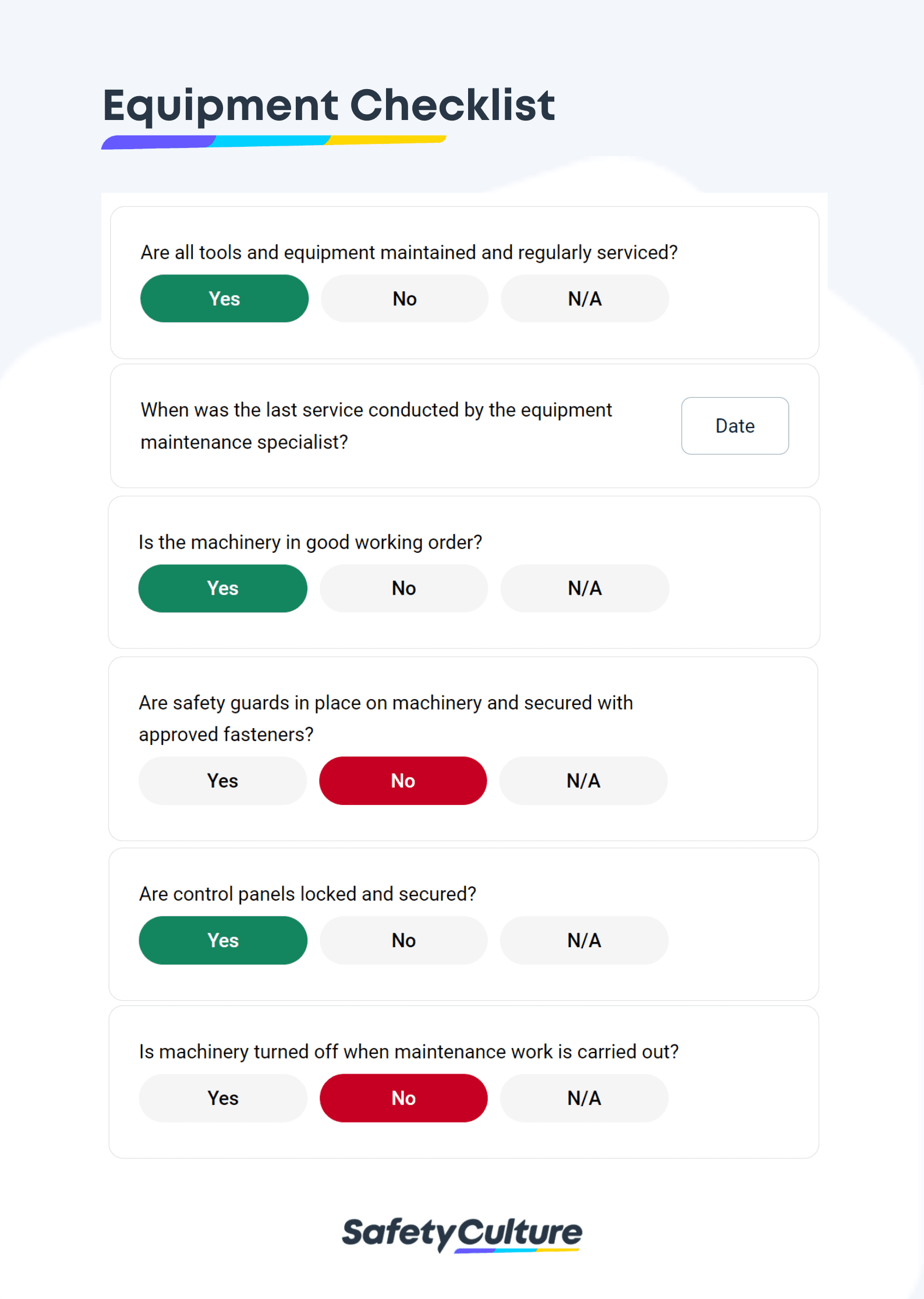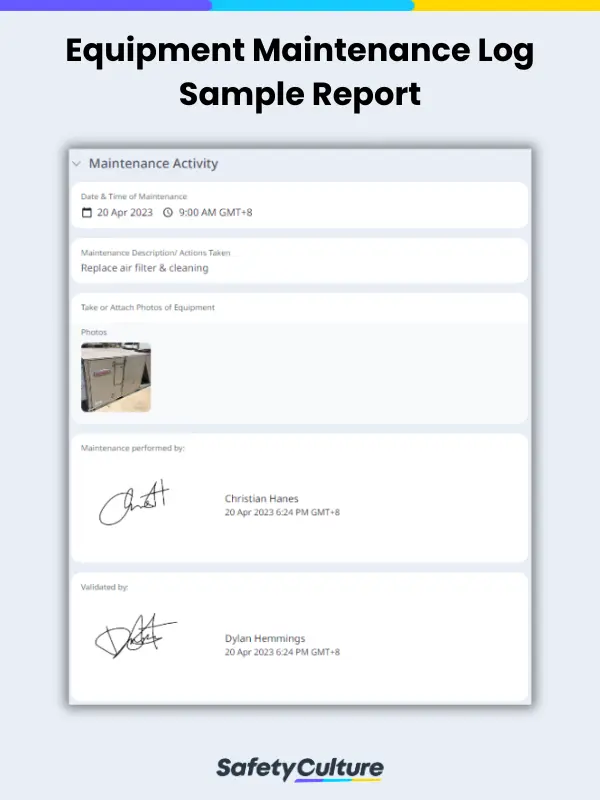What Is an Equipment Checklist?
An equipment checklist is a tool used by workers to make sure that the equipment needed to get the job done is complete and ready for use. It is generally used for the inspection, maintenance, inventory, and management of equipment in the construction, manufacturing, and retail industries. In some cases, it is used by entrepreneurs to check the count and condition of the equipment present in their small business. Using equipment checklists can help ensure workplace safety, maximize equipment lifespan, and streamline company workflows.
ddddddd
Types of Equipment Checklists
Different types of equipment checklists can be categorized according to various factors such as industry standards, business needs, and user preferences. Whatever the case, it is essential that staff regularly use equipment checklists, especially in high-risk industries. To help teams get started, here are four types of equipment checklists based on purpose:
1. Equipment Inspection
This type of checklist is commonly used by construction workers to inspect the safety of equipment before using them. It often details which parts of the equipment should be checked and exactly what the operator should look out for. At-risk components should be flagged immediately to prevent the use of potentially defective equipment and avoid incidents. Download free equipment inspection forms.
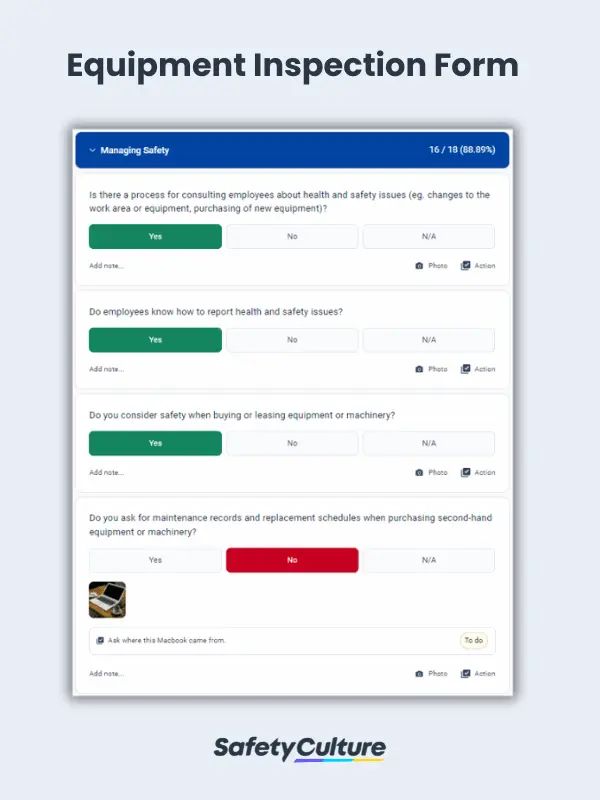
2. Equipment Maintenance
This type of checklist is normally used by manufacturing technicians to perform routine maintenance tasks on any type of equipment. At first glance, equipment checklists for pre-use inspections seem the same with the ones used for equipment maintenance, but in reality, there is a significant difference. Checklists used for maintaining machinery outline specific actions that should be taken in order to ensure that a piece of equipment remains in good working condition. Download free equipment maintenance logs.
3. Equipment Inventory
This type of checklist is used in almost every industry which includes, but not limited to, transport and logistics, mining, facility management, hospitality, and retail. It is used to itemize company equipment and verify that the actual count matches records. It is also frequently used in corporations to monitor the number of office equipment they possess. For example, using conference room equipment checklists helps ensure that all appliances, materials, and fixtures needed for a scheduled function are available and ready for use.
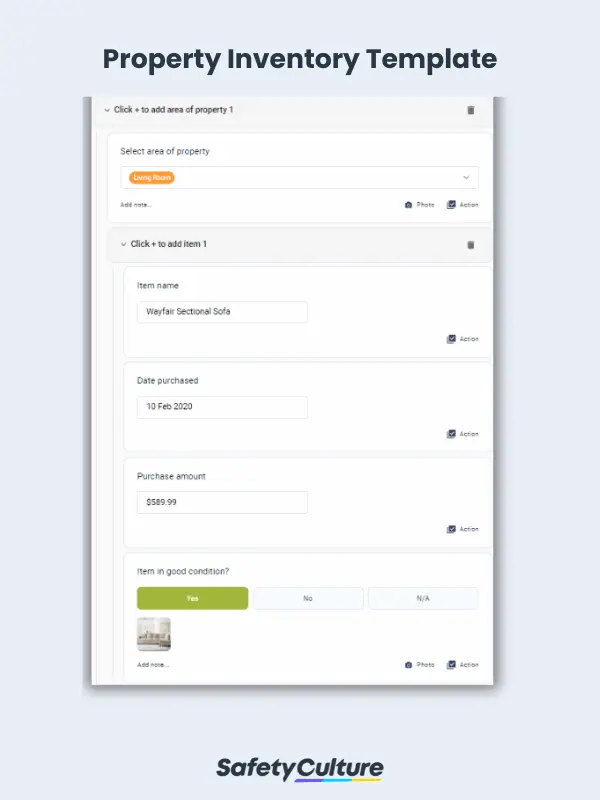
4. Equipment Management
This type of checklist is typically used by office managers to keep track of the movement of equipment within an organization. It usually contains elements about which piece of equipment will be utilized, when it will be needed, and who will be responsible for it. For example, these equipment sign-out sheets aim to reinforce the legal and compliant use of company resources and help avoid misuse, loss, and theft of company equipment.
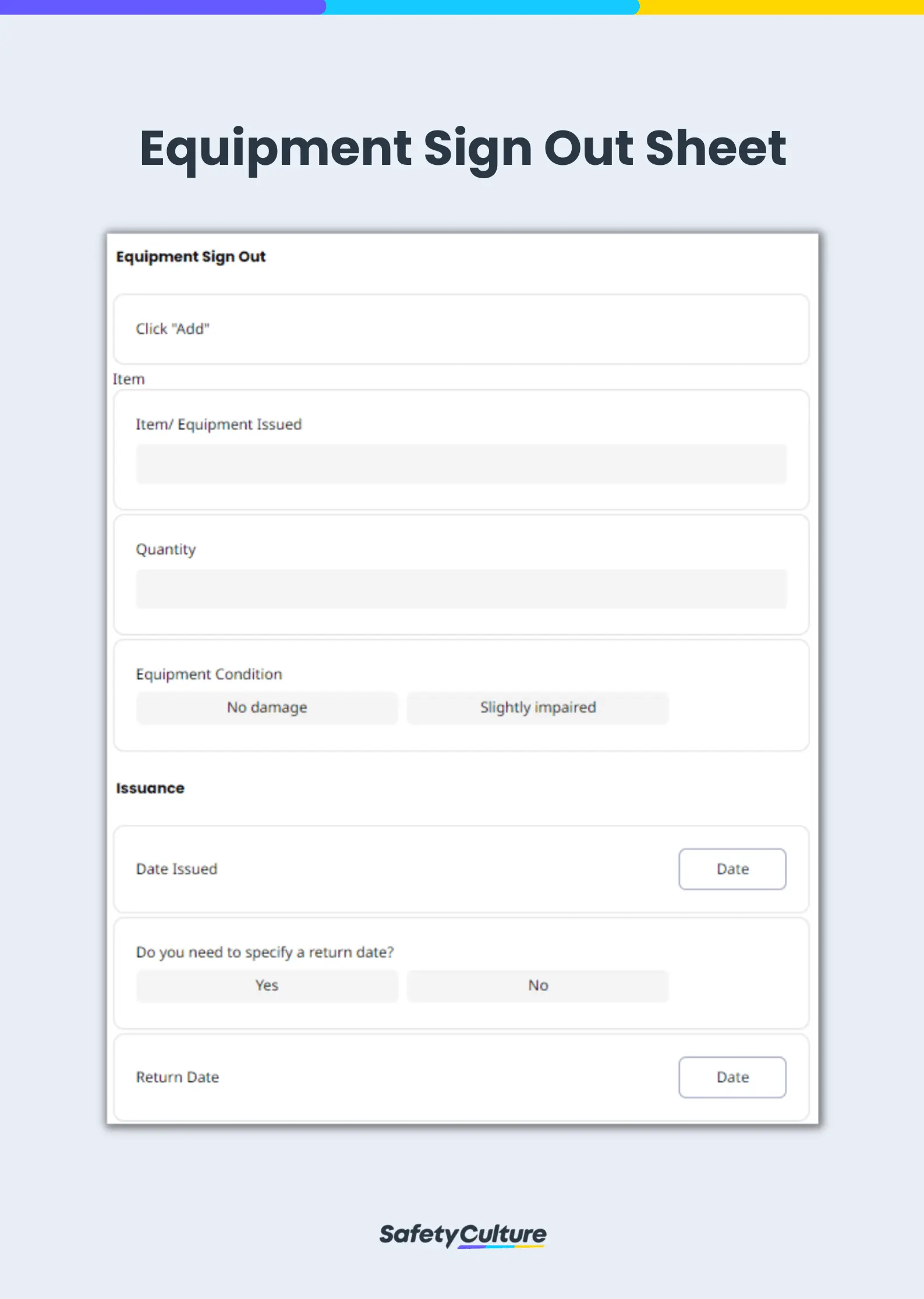
Equipment Sign-out Sheet | View Template
FAQs about Equipment Maintenance
Equipment maintenance inspections should be carried out regularly, at least every 6 months or annually to maintain its condition. Frequency of maintenance inspection can also depend on the manufacturer’s suggestion or by the risk assessment.
An equipment maintenance checklist ensures that your equipment is in good working condition. Regular maintenance checks on equipment can help reduce downtime, maintenance costs, and can also prevent the occurrence of accidents and injuries caused by faulty equipment.
An equipment inspection checklist is used to check the condition of the equipment before use. It includes an itemized list of the equipment’s parts that the operator should look out for. Equipment inspection is important as it ensures that work equipment is safe for use. It can prevent health and safety risks. Negligence on identifying and reporting faulty equipment can lead to injury, accidents, and damage to property.

